
| AN EXCLUSIVE DIGITAL SUPPLEMENT FOR MEXICAN/LATIN FOODSERVICE | www.elrestaurante.com | FALL 2023 Banking On WINE & CRAFT BEER

Mexican restaurants are known for their Margaritas and Corona , but there are profits to be made from a quality wine and craft beer program. How can your restaurant benefit from wine and craft beer? We’re confident the stories you’ll find on on the following pages will help you build a successful wine program, find and promote craft beer that complements your cuisine, and promote both those beverages to maximize your bottom line.
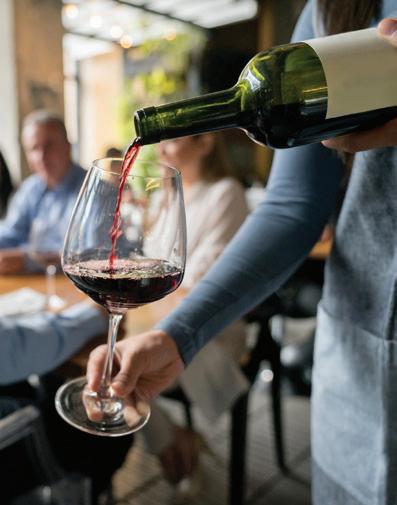


 Ed Avis
Ed Avis
PUBLISHER
Kathleen Furore EDITOR
Ala Ennes
ART DIRECTOR
MAIN OFFICE phone: 708.267.0023
PRESS RELEASES TO: kfurore@restmex.com
MAILING ADDRESS P.O. Box 13347 Chicago, IL 60613
SHIPPING ADDRESS 1317 W. Belden Ave. Chicago, IL 60614
AD SALES/ENGLISH Ed Avis 708.218.7755 edavis@elrestaurante.com

Suzanne Bernhardt 678.880.9282 suzanne@elrestaurante.com

AD SALES/ESPAÑOL
Alfredo Espinola 52-55-7862-4491 alfredo@elrestaurante.com
PUBLISHED BY Maiden Name Press, LLC
Copyright 2023. All rights reserved.
Editor’s Note
el restaurante+ | FALL 2023 3
Haga clic aquí para leer el artículo en español In This Issue Haga clic aquí para leer los artículos en español.
WINE 101: Know the Basics to Get the Most From Your Wine Menu
POURING PROFITS: Seven Tips to Help Double Your Wine Sales 10 THE ‘WHY’ OF Serving Mexican Wine 12 GET BAR SALES HOPPING with Mexican Craft Beers 13 THE LOW DOWN ON NO ALCOHOL: Alcohol-free Beer & Wine Sales Continue to Climb 10 4 12 8
4
8
Wine 101 KNOW THE BASICS TO GET THE MOST FROM YOUR WINE MENU
 Haga clic aquí para leer el artículo en español
BY ED AVIS Margaritas, Mojitos
Haga clic aquí para leer el artículo en español
BY ED AVIS Margaritas, Mojitos
and other Latininspired cocktails get most of the attention at Mexican and Latin restaurants — and rightfully so, since they go so well with the food being served. But these popular cocktails aren’t the only bar beverages your customers crave.
According to the National Restaurant Association’s report On the Menu: Trends in On- and Off-Premises Beverage Alcohol,1 a solid number of restaurant customers want the option to order wine when they dine. Overall, 31% of adults age 21+ say they drink wine with a restaurant meal — and the percent is even higher for millennials. Thirty-seven percent of this key demographic group say
they will drink wine with a meal at a restaurant. Another finding: 69% of wine drinkers say the availability of alcohol beverages makes them more likely to choose one restaurant over another.
That data holds for customers who visit all kinds of restaurants, Mexican and Latin included. And that means many of those wine drinkers are likely your customers — or could be. As the report notes, “A beverage program catered to these customers can attract new business.”
Understanding the basics of wine production and then crafting a wine menu that best matches your cuisine are the first steps in bringing wine drinkers into the fold.
4 el restaurante + | FALL 2023
5 TIPS for Successful Wine Service
1 Build a Great Wine List You will sell more wine if your list includes quality wines at multiple price levels and has enough diversity to interest new and experienced wine drinkers. Explore wines yourself, or ask your distributor for recommendations, and choose a mix of whites, reds and sparkling wines that you feel match well with your menu. Familiar wines typically sell better, but a few lesser-known labels can intrigue customers in ways that might get them to try something new.
2 Make Your Wine List a Sales Tool When you prepare your wine list for the menu, include interesting information about each wine, including its taste characteristics, where it came from, who the winemaker is, and which menu items the wine pairs well with. Add your own impressions of the wine. All of this information will encourage customers to try your wines.
3 Teach Your Servers Make sure your servers are familiar with all wines you offer. If they can knowledgably recommend wines and answer customers’ questions, they will be your best wine salespeople. Whenever you add a special or change your menu, choose wines that pair well with the new dishes and let your servers taste the pairing. That way when a customer orders a dish, the server can confidently recommend a wine to pair with it.
4 Use the Right Glass The right wine glass enhances the experience. A quality, all-purpose wine glass is acceptable for all non-sparkling wines, but experienced wine drinkers expect to have different glasses for each style of wine.
For example, bold red wines such as Cabernet Sauvignon are usually served in tall glasses with wide bowls that allow the wine to “breathe,” whereas Champagne glasses have narrow bowls so the wine keeps its carbonation longer.
And when you’re considering barware, keep this from the National Restaurant Association’s report in mind: 79% of consumers say they would like the option to order smaller tasting-sized glasses of wine from the menu.
5 Show, Open, Pour Serving wine properly shows your customers that you care about their experience. Your server should first show the bottle, unopened, to the person who ordered it. Once he or she confirms that it is the correct wine, the server should remove the foil around the cork at least a half inch down; insert the corkscrew directly into the center of the cork and pull it straight out, using his or her hand to quietly wiggle it out the last bit; and present the cork to the customer.
Next, the server should pour about a half inch of wine into the customer’s glass so he or she can taste it. Once it is approved, the server should finish serving the taster. The rest of the guests should then be served, women first, in clockwise fashion. Regardless of the type of glass being used, a normal pour is about half full for red wine; one-third full for white; and three-quarters full for sparkling wine. A 750-ml bottle should provide about five pours.
If the wine is white, the server should ask if the guests would like the bottle left on the table or returned to the refrigerator. If they prefer that it be left, the server should provide an ice bucket.
31% of adults age 21+ say they drink wine with a restaurant meal — and the percent is even higher for millennials. Thirty-seven percent of this key demographic group say they will drink wine with a meal at a restaurant.
—National Restaurant Association, On the Menu: Trends in On- and Off-Premises Beverage Alcohol
el restaurante+ | FALL 2023 5
—National Restaurant Association, On the Menu: Trends in On- and Off-Premises Beverage Alcohol
Know the Basics
Wines are named after the grapes that produce them. Chardonnay, for example, is made from Chardonnay grapes.
Many factors affect the taste, smell and color of wine. The most important factors are the grapes, the fermentation process, and aging. For example, Syrah wine gets much of its spicy, fruity flavor from the Syrah grapes, but where those grapes were grown; what soil and weather conditions existed when the grapes were growing; what type of barrel the wine was aged in; the skill of the winemaker; and how long it aged all affect the wine.
Wine labels are packed with information. The producer’s name is always prominent, often followed by a particular vineyard or brand. The type of grape used is usually listed; sometimes multiple types if the wine is a blend. The country of origin is included, as well as the viticultural area, if the wine is from one of those designated areas. Other details include the alcohol content, the vintage date, and the sugar content of the grapes.
Match Your Wine to Your Menu
One amazing characteristic of wine is that it enhances the food it is paired with. And customers appreciate advice when choosing a wine to go with their meal. According to the National Restaurant Association report, 78% of consumers say they would like to order wine selected by the restaurant to pair with food items on the menu.
Try to match the body of the wine with the type of food. For example, light-body wines (under 12.5% alcohol) such as Riesling or Prosecco pair with light foods, such as salads and rice dishes. Medium-body wines (12.5% to 13.5% alcohol) such as Rosé, Pinot Grigio and Sauvignon Blanc go well with fish tacos or enchiladas verdes. Full-body wines (more than 13.5% alcohol) including Chardonnay and most
An Opportunity to Profit
Most restaurants mark up wine 100 to 300 percent on the wholesale cost. So, if you buy a bottle from your distributor at $15, you will probably charge your customers $30 to $60 for that bottle. That’s a nice profit, especially considering it takes very little labor and prep work to pour a glass of wine (and even less to deliver a bottle to a customer’s table). In general, the mark-up for wine drops as the wholesale price increases, and wine sold by the glass always has a larger mark-up than wine sold by the bottle.
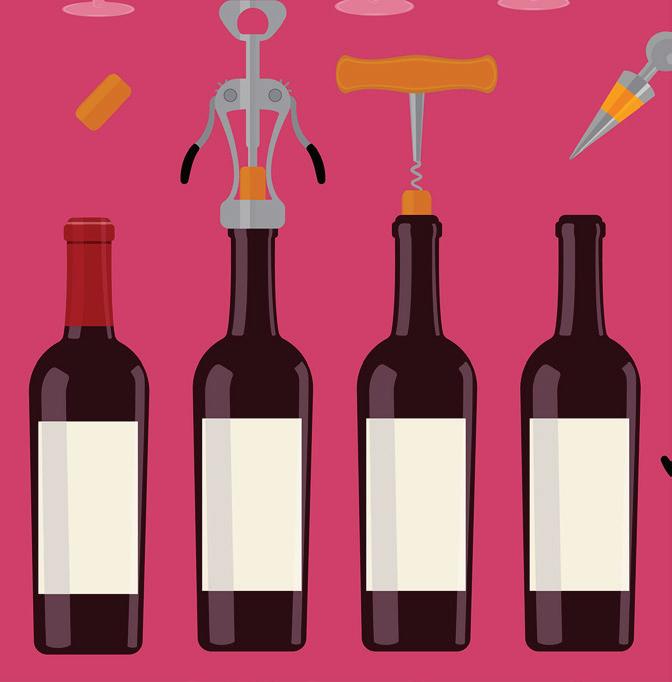
“Time is money” is a concept to remember when you are pricing your wine. Unsold bottles sitting on your shelf tie up your money; price them a little lower and sell them quickly and you will ultimately earn more money. Customers expect good wine at a fine restaurant, and they will buy more if they feel the price is fair. You should experiment with your customer base to see what level of quality and price generate the most profit.
red wines pair well with mole dishes and carnitas.
Wine can be a great friend of spicy food. Sweet white wine, such as Riesling, is a classic wine to pair with dishes containing jalapeños or habañeros, because the sweetness and cold counteract the spice. But some people love eating spicy food with a higher alcohol red wine, such as Shiraz, because it stands up well to the boldness of the dish.
Latin dishes are often complex, so finding the right wine to pair with a given dish often involves tasting several wines. Have fun experimenting!
Ed Avis is the publisher of el Restaurante.
1 Consumer Survey: The National Restaurant Association commissioned Engine to conduct an online survey of 1,900 adults aged 21+ in December 2022.
6 el restaurante + | FALL 2023
78% of consumers say they would like to order wine selected by the restaurant to pair with food items on the menu.

POURING PROFITS Seven Tips to Help Double Your Wine Sales
Tammy LaNasa is the On-Premise National Accounts Director at Fetzer Vineyards and an expert on restaurant sales of wine. She presented three webinars on the topic to el Restaurante readers last year. She presented many tips for selling more wine; here are seven of them:

1Offer more than just a house red and white. Give your servers an opportunity to upsell and give your wine-loving customers something to enjoy. LaNasa suggests three reds and three whites, at slightly different price levels.
When you’re designing the wine list, your natural temptation will be to put the house wines, which are the least expensive, at the top. But you’ll increase profits by putting a better wine at the top and your house wines at the bottom.
“We know from marketing research that they stop at the top and don’t go down,” La Nasa says. “So, you want to list the upsell opportunities at the top of the list and your house wine or first tier offerings at the bottom of the list.”
2Train your staff to suggest wine. If your servers say, “Would you like a top shelf Margarita or a glass of Sauvignon Blanc to start?” your customers are much more likely to try one of those options than if your servers ask, “Do you want a drink?”
But before your staff can suggest wine, they have to know something about it, so you should regularly have staff wine tastings. Have them choose a favorite that they are most comfortable recommending and help them describe the wine using simple language — for example, Chardonnays often have vanilla and apple flavors; Sauvignon Blancs usually are crisp and feature grapefruit flavor.
“You need to be able to talk about the wines on your list,” LaNasa says. “We know that when you engage your staff to sell more of anything, wine, margaritas or beer, it will elevate all of your beverage sales.”
3Offer wine by the glass — but keep it fresh.
“When I go into a restaurant and I see wines by the glass, my first thought is, Ooh, I hope they’re fresh. Especially in a restaurant that is maybe not known for wine,” LaNasa says.
There are several strategies for keeping wine fresh. First, have staff write the date on the back of
Haga clic aquí para leer el artículo en español
a bottle when it is first opened. A bottle of wine that is recorked after opening, both red and white, will last about three days. After that, pitch it.
Second, you can buy those little pumps that take the air out of a bottle after it is opened. Or buy some bottles of the spray that you can spritz into the bottle before recorking it to keep the oxygen away from the wine.
If you want to take a step up, invest in a Coravin. This is a machine that inserts a little needle into the cork so that you can serve wine from the bottle without opening it. The machine adds argon as it removes the wine, keeping oxygen out. Depending on the system, these cost about $200 to $600.
Another idea: try a wine happy hour featuring discounted glasses of wine and appetizers. It’s a popular option, according the the National Restaurant survey, which shows that 82 percent of consumers will consider visting restaurants that offer discounted wines during less busy days of the week and 78 percent would likely take advantage of discounted wines offered during less busy times of day. The hope here is that after a glass or two of wine, the diners will stay for dinner — at full price, of course.
LaNasa says she has succeeded with a happy hour combined with tango lessons.
4
Create a wine sales contest for employees. Most people enjoy competition, and your wait staff may respond well to a contest for who sells the most wine. Prizes could be a bottle to take home, a nice bottle opener, or something more special, such as a scholarship for a wine class.
Another option is to have your current staff compete with sales from the previous year. If your POS can tell you how many glasses of wine were sold on a particular day, post that information and encourage your staff to sell more this year on that day.
“Wouldn’t it be fun at the back of the house, to say, ‘Okay, last year we sold 12 glasses of wine on this day. Today let’s shoot for 15,’” LaNasa says. “Give them something to shoot for.”
5Host a wine dinner or wine happy hour
According to the National Restaurant Association’s On the Menu: Trends in On- and Off-Premises
Beverage Alcohol,1 an impressive 81 percent of consumers say they would be likely to attend a wine dinner that includes a special menu of food and wine pairings.
You could try a wine and empanada or a wine and taco tasting that includes a different wine paired with each of three different empanadas or tacos, and charge a fixed price for the experience. This will introduce diners to your wines and show them how well they go with your menu items.
“Every city has a dance company where you can call and ask for a tango instructor or a couple to come to your restaurant and tango in the bar for happy hour,” she says. “You can play tango music and then give people a taste of good South American wine. It’s a way that you can add some fun the day.”
6Pick a featured wine of the month. Talk to your wine distributor about getting a good deal on multiple cases of a particular wine if you promote it as “Wine of the Month.” Then make sure your servers know about the wine and are enthused about suggesting it. This concept will elevate your overall wine program because customers will see that you are focusing on it.
7Tell the wine’s story. On the wine menu at Xochi in Houston, a restaurant owned by Chef Hugo Ortega, brief stories accompany the descriptions of several wines. For example, the description of the 2019 Henri Lurton Chenin Blanc says, “This French-owned winery was started by Ensanada-born winemaker Lourdes Martinez. We think this is the best white wine you can find out of Mexico right now. Barrel-aged in French oak with a rich style of stone fruit, wildflower, toasted hazelnut and honeyed pear. A gorgeous white that is nearly as rich, but more food friendly, than Chardonnay.”
Doesn’t that description make you want to order a bottle right now?
el restaurante+ | FALL 2023 9
1 Consumer Survey: The National Restaurant Association commissioned Engine to conduct an online survey of 1,900 adults aged 21+ in December 2022.
The ‘Why’ of Serving Mexican Wine
BY ED AVIS When people eat in an Italian restaurant, they expect to find Italian wines on the wine list. And when people eat French cuisine, they wash it down with French wine. But in most Mexican restaurants, the only wines on the menu are American or South American.
Why? Tradition is the biggest factor. Mexican restaurants are known for beer and Margaritas, so wines have been an afterthought. Reputation is another factor. For many years, Mexican wine was not regarded as a quality product.
But times are changing. Today the very best Mexican restaurants do have Mexican wine on the menu, and over the past two decades Mexican vintages have greatly improved. In fact, wines from Mexico won 85 medals at the 2023 Concours Mondial de Bruxelles, a prestigious international wine
competition in Brussels, Belgium, where the Cenzontle Blanco 2019 produced in Mexico’s Valle de Guadalupe was crowned the highest-scoring white wine.
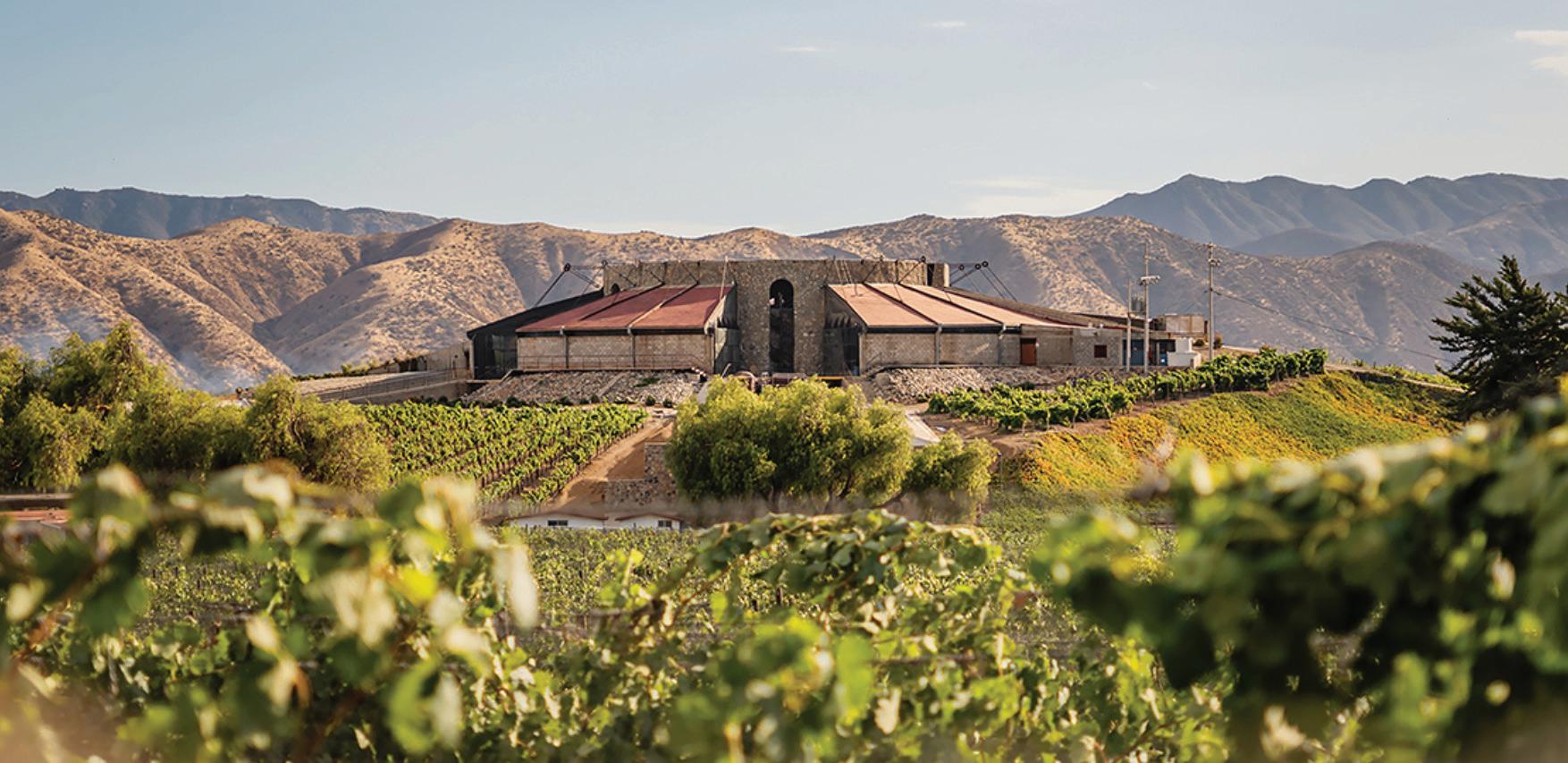
“A lot of people are surprised when they taste one of my wines,” says Max Strygler, owner of Primos Imports in New York, an importer that focuses on Mexican wines. “They say, ‘Oh my God, this is great.’ And I’m like, ‘Of course it’s great!’”
As Mexican cuisine grows in prominence on the world stage, it only stands to reason that Mexican wine does, too.
“These days, Mexican cuisine is becoming even more high end,” Strygler notes. “Every day you see more Mexican restaurants opening with higher-end cuisine. They’re even winning Michelin stars. And with high-end cuisine, you need wine.”
Wines from Mexico won 85 medals at the 2023 Concours
Mondial de Bruxelles , a prestigious international wine competition in Brussels, Belgium.
10 el restaurante + | FALL 2023
Bodega de Santo Tomás
Haga clic aquí para leer el artículo en español
So, when you plan your next menu change, remember that customers want something special when they eat out. And Mexican wines can be that “something special.” The following list offers options to explore:
Bruma Vinícola This winery, located in Valle de Guadalupe in Baja, is the workspace of famed winemaker Lulu Martinez Ojeda, who is known for experimentation and high quality. Among Bruma’s wines are Ocho Tinto, a blend of Cabernet Sauvignon and Petite Syrah and Plan B Blanco, a Chardonnay. Ojeda also makes wine for Casa Jipi and Palaflox.
Casa Madero The oldest winery in North America, and one of the largest. They have growing distribution in the United States. Casa Madero is located in north central Mexico, in the Valle de Paras, near Monterrey. They are best known for their Malbec and their blends, such as 3V, which is a blend of Cabernet Franc, Cabernet Sauvignon, and Shiraz.
Casa Magoni This is the home winery of Camillo Magoni, an Italian who is considered a pioneer in Mexican winemaking. Among his wines are Origen 43, an innovative blend of Sangiovese, Aglianico, Canaiolo, Montepulciano and Cabernet; and Manaz, a blend of Viogner and Fiano.
Casa Piedra Casa
Piedra is the original winery of Hugo D’Costa, another major player and pioneer in Mexican winemaking. Among Casa Piedra’s wines are Espuma de Piedra, a sparkling pink wine made from Zinfandel grapes, and blends, such as Contraste Intercontinental 2017, a blend of Cabernet Sauvignon, Grenache, and Syrah.
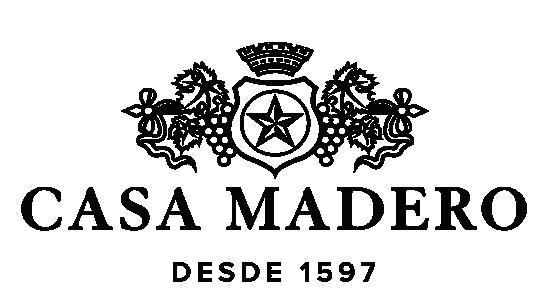
LA Cetto LA Cetto, also located on the Baja peninsula, has wide U.S. distribution. The winery is known for Syrah, Malbec, and some blends.

Monte Xanic This winery also has solid U.S. distribution. They are located in the Valle de Guadalupe in Baja. They make quite a range of wines – their highest rated are blends, such as Gran Ricardo, which is a blend of Cabernet Sauvignon, Merlot and Petit Verdot.
Santo Tomás. This is the second oldest Mexican winery, founded in 1888 (though Dominican friars were producing wine for church use on the property about a century before the commercial winery opened) .

The winemaker is award-winner Laura Zamora. They produce excellent wines including Chardonnay, Chenin Blanc, French Colombard, Cabernet Sauvignon, Syrah, Tempranillo and many blends.


Where to Find Mexican Wines
A growing number of distributors carry quality Mexican wine. Here is just a partial list. Visit their websites to see which wines they carry in your state.
• Abya Yala Distributing
• Atrium Wine Brokers
• Best Brands

• Bodin Street Wine & Spirits
• Breakthru Beverage
• Burke Beverage
• Compa Spirits
• Horizon Beverage
• Johnson Brothers
• Kohler Distributor
• Manhattan Beer Distributors

• Maverick Beverage
• Mexcor
• New France Wine Co.
• Osito Wine
Distributing
• Quail Distributing
• Republic National Distributing
• Salvetto Importing and Distributing
• Serendipity Wines
• Southern Glazer’s
• Summit Spirits and Wine
• Votto Wines
• VOS Selections
el restaurante+ | FALL 2023 11
GET BAR SALES HOPPING WITH Mexican Craft Beer
BY ED AVIS Nearly every Mexican restaurant with a liquor license sells Corona and Dos Equis, and countless customers order those brews. But if you want your Mexican restaurant to stand out in the crowd, try adding some craft brews with a Latin twist. Availability of interesting beers varies state-by-state, so all of the beers below may not be available in your area. But these nine breweries are worth investigating:
Baja Brewing Co. Although based in Mexico in Los Cabos, Baja Brewing’s beers are available in the United States. Its year-round line-up includes Cabotella Blonde Ale, Por Favor Mexican IPA, Escorpion Negro Black Ale and La Surfa Baja Lager.

Casa Humilde Cerveceria A Chicago-based brewer with Latin roots, Casa Humilde offers beers including Maizal, a Mexican-style lager with a touch of corn; Piñata, a hazy IPA with pineapple; and Media Naranja, a pale ale with orange peel.

Cerveceria Colorado The wide range of Mexican beers available year-round from Cerveceria Colorado incudes Venga, a traditional Mexican lager cold-fermented with Mexican lager yeast; Que Buena, a Mexican lager with lime; and Mi Vida, an IPA made with hops grown on Loza Farms, owned by a Mexican-immigrant family.
Cerveza Insurgente Based in Tijuana, Cervez Insurgente exports its brews to the United States. Its best-known beer is Tiniebla, a pilsner with orange and coriander added. Another is La Lupulosa, an intense IPA.
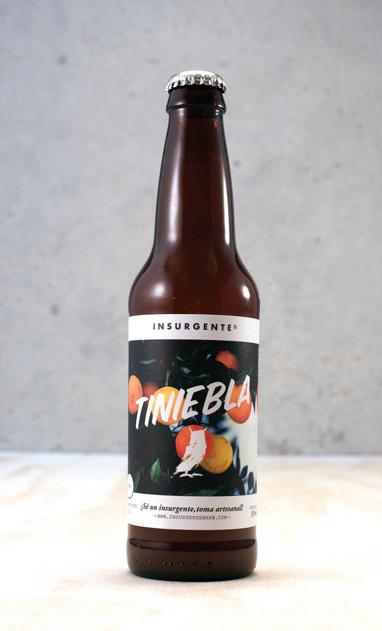

Chihuahua Cerveza Founded in Newport Beach, California in 2017, Chihuahua

Cerveza offers a line of Mexican-style lagers. Chihuahua El Primero is a pale lager with a clean and lightly sweet finish; Chihuahua Limon is a lager with a lime spritz and a pinch of salt; Chihuahua
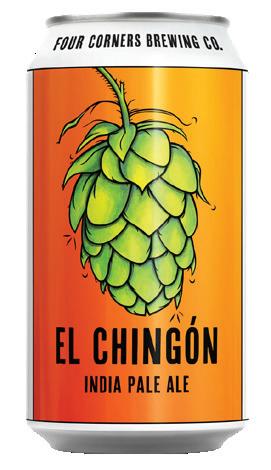
Guava-Lime is a low-cal lager brewed with guava and a hint of lime; and Chihuahua Rico is a full-flavored lager with a touch of malt flavor.
Cruz Blanca A Chicago company created in part by famed chef Rick Bayless (who is no longer with the company), Cruz Blanca’s beers include Palm Shade, an IPA with hints of orange, mango and pineapple; Mexico Calling, a lager “especial”; Chelada, a tropical lager with lime and sea salt; Vamos, a Vienna-style lager; and Super Rica, a West Coast IPA with nectarine and pine.
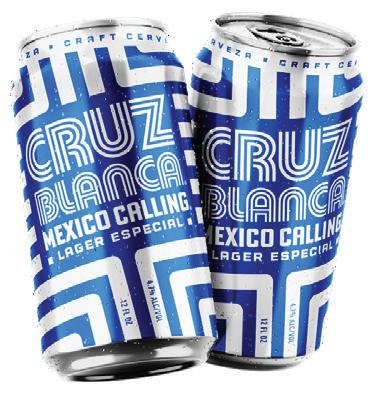
Four Corners Brewing Co. The brewery, founded in 2009, offers a lineup that includes El Chingón IPA; La Chingona Double IPA; El Grito, a lager; Local Buzz, a honey-rye golden ale; and Heart O’ Texas Red Ale. The beers are distributed in Texas by Southern Glazer’s.
SouthNorte Founded in 2016 in San Diego, SouthNorte brews Mex Lager and Mango IPA. The company also creates canned cocktails, including a margarita and a paloma.

Veza Sur Brewing Co. This Miami, Florida-based brewery has been offering a selection of craft beers since 2017. The brewery distributes to bars and restaurants throughout Florida. Its year-round beers include Mangolandia, a wheat ale flavored with mango; South Coast IPA, with a relatively high ABV of 7.5 percent and a tropical, citrusy taste; and Born and Raised, a blonde ale.
Haga clic aquí para leer el artículo en español

The Low Down on No Alcohol ALCOHOL-FREE BEER & WINE SALES CONTINUE TO CLIMB
BY KATHLEEN FURORE Is the low-/no-alcohol (NA)
trend just a fad? Or is it here to stay?
It’s a question anyone responsible for ordering bar inventory at Mexican and Latin restaurants is likely wondering as they hear terms like “sober curious” and see events like Dry January, which has become a much-talked-about timeframe when consumers give up all things alcohol to kick off the new year.
According to recent research from consumer insights platform Veylinx, the talk about abstinence from alcohol is more than just a social media fad.
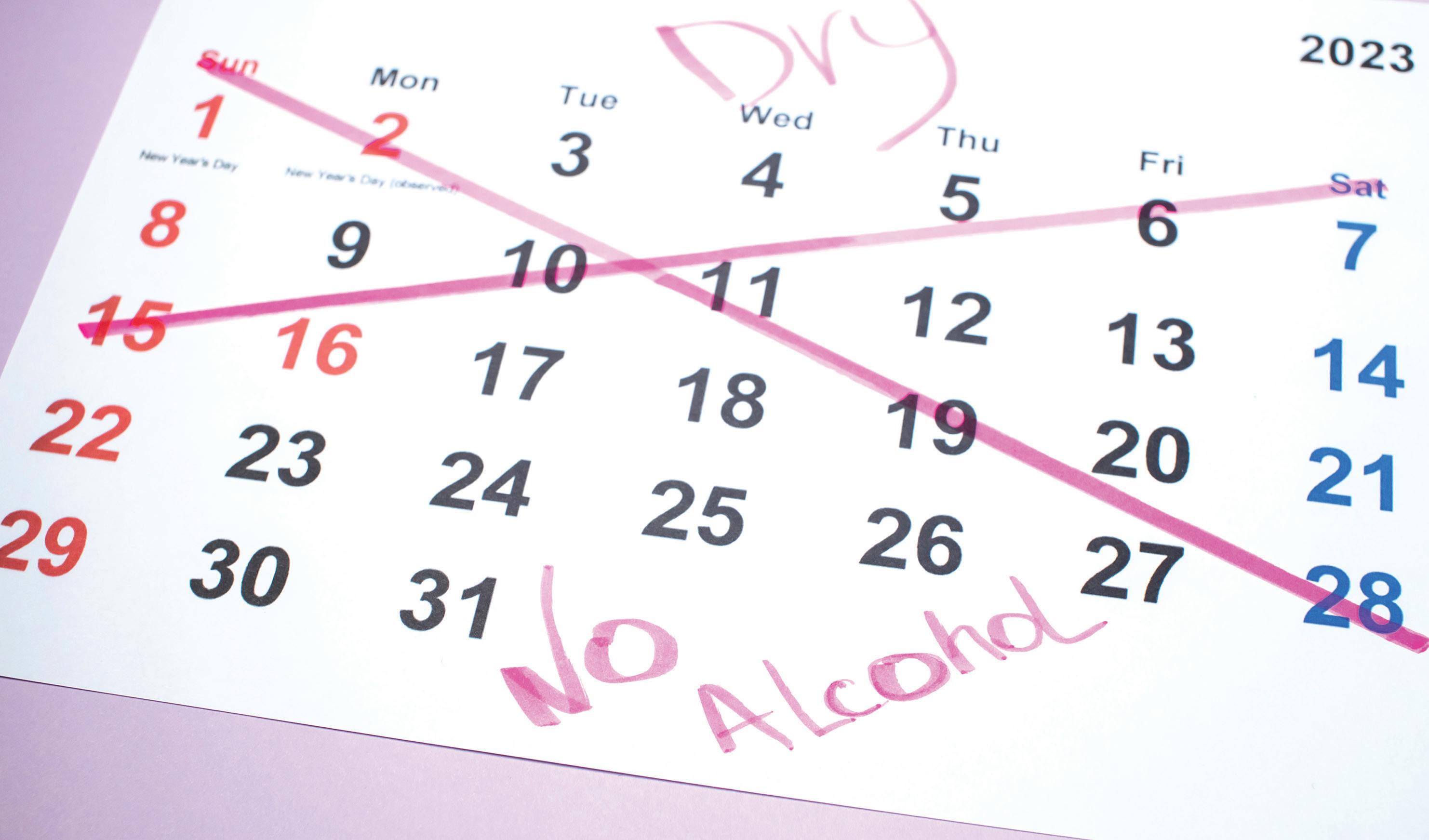
“More than three-quarters of Americans say they’ve temporarily given up alcohol for at least a month in the past,” Veylinx reports, noting that 46 percent of drinkers are trying to reduce their alcohol consumption and that 52 percent of them are replacing alcohol
with non-alcoholic beverages.
It’s a trend making its way onto the restaurant scene, according to Victoria Novo, national sales manager at Goya Foods, Inc.
“We’ve been seeing more interest from our clients in dealcoholized wines, particularly over the past year or so,” says Novo. “Consumers see these products as great-tasting, healthier beverage options that enhance their dining experience. For example, our Tres Ceros wines have the beneficial properties regular wines offer — things like polyphenols, anthocyanins and antioxidants. And because they are dealcoholized, they appeal to consumers who don’t want to or can’t drink full-alcohol beverages. They also have just half the calories of regular wine, and also are vegan, gluten- and sugar-free.”
el restaurante+ | FALL 2023 13
“More than three-quarters of Americans say they’ve temporarily given up alcohol for at least a month in the past.”
—VEYLINX
Haga clic aquí para leer el artículo en español
A Demographic & Category Break-down
The Veriflex data doesn’t stand alone when it comes to the move toward alcohol-free drinking. Information from the beverage alcohol e-commerce platform Drizly echoes that data.
“The desire to try non-alcoholic beverages continues to climb, with half of respondents having tried NA beer, wine or spirits,” the 2023 Drizly Consumer Trend Report says.
The demographic breakdown is interesting and can help inform restaurants and bars trying to decide on an NA lineup that makes the most sense for their establishment.
According to Drizly, the NA category “is sparking the most interest amongst Gen Z and Millennials who have tried these drinks more frequently than other
generations, as well as men, who reported drinking NA beer, wine or spirits more often than women.”
Kantar Global MONITOR reports similar, slightly nuanced findings.
“Although Gen Z drink alcohol the least among generations, Millennials are currently the most likely consumers to drink low- and non-alcoholic beers and spirits,” Kantar data says.
Beer and wine, data shows, are the two categories driving the low-/no-alcohol movement.
At retail for example, “beer is poised to drive overall NA growth,” according to Drizly’s 2022 Retail Report, which shows that “nearly 61% of respondents called out beer as the non-alcoholic product they’re planning to stock more next year — nearly 30 points ahead of second-place finisher wine.”
Drizly’s 2023 Consumer Trend Report echoes those findings, but sees changes coming.
“While NA beer may be the most preferred zero-proof drink of the moment …looking forward, respondents are most curious to try NA wine in 2023” that report says.

Liz Paquette, Drizly’s Head of Consumer Insights, sums up the market this way: “… consumer preferences are changing when it comes to beer, wine, and spirits — more Americans, especially Gen Z and millennials, are gravitating towards zeroproof options…”
It’s something to consider when planning a bar menu that will generate orders from alcohol — and non-alcohol — drinkers alike.
14 el restaurante + | FALL 2023
Kathleen Furore is the editor of el Restaurante.
“We’ve been seeing more interest from our clients in dealcoholized non-alcoholic wines , particularly over the past year or so… Consumers see these products as great-tasting, healthier beverage options that enhance their dining experience.’
—VICTORIA NOVO, GOYA FOODS
“The desire to try non-alcoholic beverages continues to climb , with half of respondents having tried NA beer, wine or spirits.”
—2023 DRIZLY CONSUMER TREND REPORT
Look What’s Coming in 2024 el Restaurante Digital Supplements

Winter — RESTAURANT REDESIGN
Whether they’re ready for a quick facelift of the dining area or a complete re-do of their front-of-house and/or back-of-house space, restaurants will find information to help them find what they need! This issue will take a look at kitchen equipment, furniture, décor, dinnerware and more.
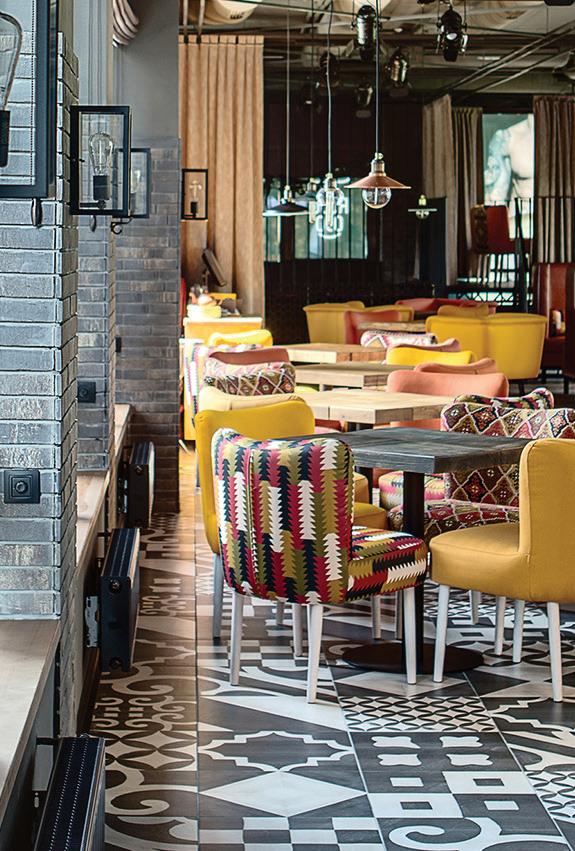

Spring — BAR PROFITS
Every restaurateur knows that the bar is the place where profits are made. This issue will explore the ingredients, barware and promotional opportunities that can help Mexican- and Latin-themed concepts make the most of their unique place in the foodservice arena to create drinks and promotions that will drive bar sales.

Summer — TECHNOLOGY

Apps can help with so many aspects of a restaurant business — everything from scheduling to inventory management to loyalty/rewards to payment options and more. This issue will help restaurants understand the apps that are right for their establishments and highlight the options available for Mexican and Latin restaurants, no matter their size or location.
Fall — OFF-SITE OPPORTUNITIES
What does a restaurant need to operate a location at a sports venue, airport, farmer’s market or other off-premise site? This issue will share input from Mexican and Latin restaurant owners who are running those kinds of locations and will include information on how to develop menus and select all the products needed to thrive off-site.

EVERY ISSUE AVAILABLE IN ENGLISH AND SPANISH!
Call Publisher Ed Avis at 708-218-7755 to discuss how we can put eR+ to work for you!





 Ed Avis
Ed Avis



 Haga clic aquí para leer el artículo en español
BY ED AVIS Margaritas, Mojitos
Haga clic aquí para leer el artículo en español
BY ED AVIS Margaritas, Mojitos


























